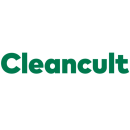For many new startups, it’s hard to explain their technology on a billboard. A fresh audience might be confused to read how Airbnb operates from the highway, for example.
When Airbnb’s engineering team developed a feature that let the company host listings on Craigslist, however, they were able to target a wide audience looking for short-term rentals. Advertising strategies integrated with engineering? That’s part of growth marketing.
And thanks to growth marketing, outdated marketing strategies like ‘spray and pray’ are getting an upgrade. According to Product Marketing Manager Nikhil Naidu at Yotpo, it’s now a brand’s job to create different messages that fit under the same campaign that can speak to the consumer at different points in the buyer’s journey.
“Growth marketing will solidify itself as the catchall term for highly measurable marketing activities,” said Director of Growth Marketing at DigitalOcean David Dorman.
With better market research, AI-driven chatbots and small-budget testing on social media platforms, marketing managers have more tools than ever to reach their target audience and tell the story of their brand. We asked four marketing managers about what growth marketing trends they are watching and what marketing professionals can do to start leveraging those trends, today.

Yotpo helps brands accelerate direct-to-consumer growth. Product Marketing Manager Nikhil Naidu said it is important to gather data on internal performance for the brands he works with in order to best tell their message. Using data analysis and company-wide interviews, Naidu and his team is able to deliver customers new insights.
What growth marketing trends are you watching in the year ahead and why do you think these trends will be important?
There are two trends I am particularly interested in following in 2020.
The first trend is combining targeting with “spray-and-pray” marketing. Since we have access to so much data on who our prospects are, marketing teams tend to craft targeted messaging by building very specific personas and developing a matrix comparing certain personas to a buyer’s journey. This can often lead to a false sense of what the “right” answer is. For a particular persona at a particular point in the buyer’s journey, there are at least five different messages that might resonate. I'm interested in following the businesses that are able to take their personas and target them with a series of different messages.
The second trend is internal market research. After talking with marketers at almost every company, data is something we all wish we had more of. Industry data and product performance data often take center stage and are really important foundations, but qualitative internal data is often overlooked and easily accessible. Internal teams have vast and up-to-date knowledge on which messages, features and assets work and which don't.
Data is something we all wish we had more of.”
What are some simple steps product and marketing pros can take to start leveraging these trends in their work?
Starting to leverage spray-and-pray messaging can start with advanced planning and be as simple as drafting out more options that might work for each persona. When we’re thinking about a prospective customer within a specific business segment, we try to compile a list of new features, existing competitive advantages and value props to make sure that we are able to attempt as many messages as possible and not only understand which work best, but also capture more market share because we are using more diverse messaging.
Gathering data on internal performance is a combination of internal data analysis and conducting regular interviews with different teams within the organization. Internal data analysis, similar to external data, can be difficult to gather. We’re often surprised by the detail and takeaways we are able to derive from regular conversation and staying plugged into various parts of the business.
An easy forcing mechanism to get this data collection muscle functioning is simply scheduling recurring meetings ahead of time and building a short interview guide to ensure the time is as useful as possible.

Director of Growth Marketing at DigitalOcean David Dorman expects growth marketing to overlap with product marketing in 2020. Dorman also expects customer data software like Segment, API-literacy and GitHub to be commonplace across all marketing industries.
What growth marketing trends are you watching in the year ahead and why do you think these trends will be important?
Growth marketing will solidify itself as the catchall term for highly measurable marketing activities, evolving from performance marketing and demand generation. I expect this role to place even more emphasis on having expertise across a range of disciplines including product marketing and technical chops.
We’ll see marketing and growth teams cut the cord on the enterprise CRM and marketing automation bundles. Customer data software, like Segment, will become commonplace and allow teams to bring their favorite email, chat and social tools, all with the benefit of consistent, real-time and rich datasets.
This is increasing API literacy within marketing teams as well as familiarity with the software development process using GitHub. These new tools and processes should provide an individual with leverage to do more, faster.
Growth marketing will solidify itself as the catchall term for highly measurable marketing activities.”
What are some simple steps product and marketing pros can take to start leveraging these trends in their work?
If you’re unfamiliar with webhooks and APIs, spend some time going down the rabbit hole to learn more.
While simply adopting tools won’t solve all your problems, they may open your eyes to what’s possible. I would explore tools to stitch together services using Tray.io and Zapier, or automating and centralizing list-building with tools like Clay.run.

Skillshare’s Senior Growth Marketing and Product Manager Lance Wildorf predicts markets to shift their budgets away from Facebook and Google and toward social platforms like Snapchat and Pinterest instead. As well, influencer marketing will take up a bigger marketing share due to their effectiveness at connecting with millennials and Gen Z.
What growth marketing trends are you watching in the year ahead and why do you think these trends will be important?
In 2020, I anticipate growth marketers will shift more of their programmatic budgets away from Facebook and Google and toward other digital platforms like Snapchat and Pinterest. As the driver of Skillshare’s new channel expansion strategy, I’ve been investigating both Snapchat and Pinterest and have been impressed by how robust both of these channels have become in terms of creative capabilities, targeting and attribution.
I’m also confident that influencer marketing across YouTube, Instagram, Twitch and even TikTok will take up a larger share of marketing dollars as bigger companies begin to understand influencers’ effectiveness in communicating with millennials and Gen Z. Finally, as companies look to expand their presence globally, I anticipate more companies will localize their payment flows and expand their payment methods as part of their international strategies.
I anticipate growth marketers will shift more of their programmatic budgets away from Facebook and Google.”
What are some simple steps product and marketing pros can take to start leveraging these trends in their work?
Growth marketers can run small-budget, high-upside tests on Snapchat and Pinterest to see if they have any traction with these newer programmatic channels. Just make sure you’re spending enough to get a solid read on the channel. It’s also vital to make sure you’re implementing their pixels correctly so that you’re attributing conversions properly.
We ran small-budget, low-risk tests in November and December and, after seeing early successes, ramped up spend afterward. CPMs are just going to go up as more marketing teams discover these channels, so it makes sense to invest spend while they’re still efficient.
Similarly with regards to influencer marketing, if you’re a B2C acquisition team, definitely consider expanding into influencers while the industry is still young and CPMs are still relatively low. Finally, I’ve been diving into internationalization efforts headfirst as part of my efforts on our growth product team. We’ve been running tests on pricing strategies, currency localization, and payment method expansion in order to increase our conversion rates in key geographies. Such tests are relatively simple ways to achieve revenue growth.

Gary Jiang, director of paid social, explained how he used multiple tactics like research and data analysis to launch their recent chatbot marketing campaign. To help promote green cleaning at Cleancult, Jiang studies how other businesses utilize new marketing platforms and the strategies they use to attract customers.
What growth marketing trends are you watching in the year ahead and why do you think these trends will be important?
Many recent SaaS platforms, agencies, vendors, best practices, and strategies are beginning to mature. I find the most success in early adoption and early maturity periods because they're the best times to take advantage of loopholes, bugs and unaccounted use-cases by developers and product managers.
The early maturity periods are great, too, because many of the first entrants into a trendy space are beginning to drop off, and only the strongest startups, developers and service providers with robust features, business models and value props are thriving. This provides a ton of strategy insight on what works and what doesn't.
We’re specifically approaching chatbots, SMS, personalized content (performance channels and on-site experiences) and whitelisted influencer partnerships with this strategic lens.
I’ve learned everything through online research and knowledge exchange with online communities.”
What are some simple steps product and marketing pros can take to start leveraging these trends in their work?
Google and online communities are your best friends in the digital and performance marketing world. I’ve learned everything I know through online research, knowledge exchange with online communities and getting my hands dirty testing and improving.
A good recent example is my approach to chatbot marketing. I found reputable strategies and tactics around setting up great chatbot campaigns, studied them in-depth and tested them to a minimal degree. I researched several service providers and spoke to each. I asked the same questions around detailed nuances of execution to get a sliding scale of approach from several experts before using all this knowledge to determine the best move for our brand and our products.







